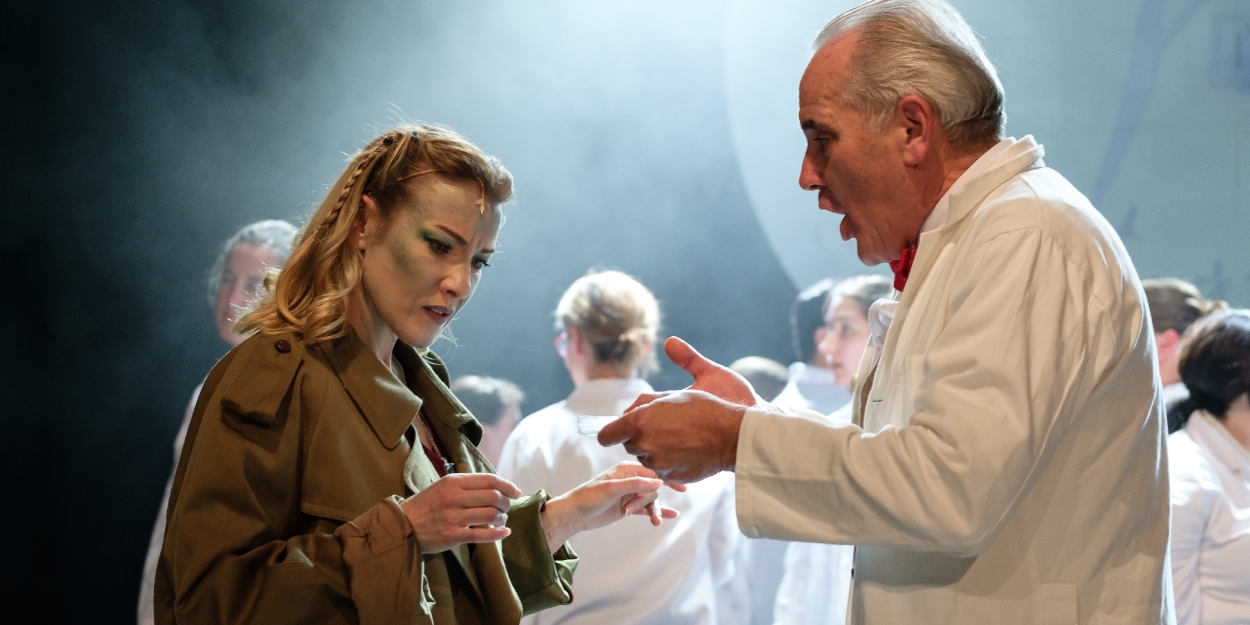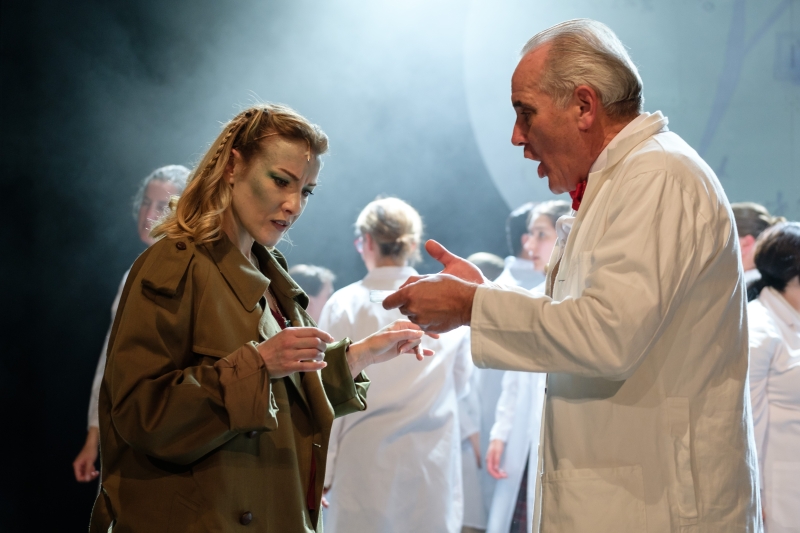Review: THE MOULD THAT CHANGED THE WORLD, Webster's Theatre, Glasgow
The musical about Alexander Fleming, the father of antibiotics tours Scotland


![]() When you think of musicals about protagonists called Alexander, a recent worldwide hit probably comes to mind. That said, the impact of the work of Alexander Fleming, discoverer of the mould that would later bring us antibiotic medicines to combat bacterial infections, also deserves to be told on stage.
When you think of musicals about protagonists called Alexander, a recent worldwide hit probably comes to mind. That said, the impact of the work of Alexander Fleming, discoverer of the mould that would later bring us antibiotic medicines to combat bacterial infections, also deserves to be told on stage.
The team behind The Mould That Changed the World have done just that. After enjoying a return to the Edinburgh Fringe, the show is briefly playing at Webster's Theatre in Glasgow ahead of a US tour.
We meet Fleming (Jeremy Rose) at the end of his life. When he meets a mysterious character called Rose (Emily Bull), we travel back in time with them to see his early work in the voluntary army reserves, then as a military doctor, and then as the father of antibiotics.
We also travel forward in time with Fleming and Rose to a time just beyond the present day, a very near future where we risk not being able to use current antibiotics at all due to increased antimicrobial resistance.
Rose plays Fleming with an endearing and determined flair. Bull gives a fine vocal performance as Rose and the mystery and mirroring of her identity that emerges during the course of the show have a lovely poetic elegance about it.
How on earth do you portray bacteria on stage? The casting of two dancers (aptly named Gram Positive and Gram Negative in the programme, nodding to the main classifications of these microbes) personifies the bacteria in a tasteful way that requires no words. The flowing choreography and colourful costumes mimic the movement of microbes around the body.
Overall, the ensemble feels a little bit too large at times. As striking as some scenes are with the injured soldiers in army hospitals and a wall of scientists in white coats questioning Fleming's theory, it would be worth rethinking whether everyone is necessary on stage at once in some places in the show.
Robin Hiley's score is distinctly Scottish, fitting giving the Ayrshire routes of the show's protagonist and is brilliantly played by a small ensemble, complete with traditional fiddle, led by musical director Neil Metcalfe.
The menacing and melancholic opening number, "The drugs don't work", is reminiscent of the opening of Sweeney Todd - perhaps a smidge too similar in terms of melody. Alternative musical styles pop up for some of the more comedic numbers, such as the press hounding Fleming for a snappy headline which keeps the audience on their toes.
The striking circular projection screen mimics the view one might expect through a microscope and a variety of touching animations accompany scenes, designed by Kate Charter. Matthew Craigen's lighting design creates powerful pulses as Fleming and Rose jump through time.
Adapting a narrative about a scientific discovery for the stage is challenging and credit must be given to the creative team, led by director Thomas Henderson, for creating a show about science that isn't pitched exclusively for kids.
More often than not, the scientific process involves multiple slow, small steps toward a major discovery, rather than a single Eureka moment. Fleming touches on this during the show and deliberately downplays his findings, and there is a sniff of cynicism from this reviewer that Fleming would have definitely had a dram with his colleague Pryce immediately after spotting the infamous mould on an agar plate. It is good to see his Nobel Prize co-winners, Howard Walter Florey (Sam Keeler) and Ernst Boris Chain (Scott Armstrong), featuring as the duo whose teams went on to purify penicillin from the mould from Fleming's lab. Science is collaborative.
Some creative liberty has understandably been taken to make a cohesive plot. The character Pryce is likely a combination of medical colleagues Fleming worked with in the war and his later academic career, including Merlin Pryce, the research assistant who, by some accounts, may have been the one to actually spot the infamous mould growing on a lab sample and repelling harming bacteria.
Thomas Henderson's book highlights the irony and full-circle phenomenon of the human race likely returning to a world without antibiotics. Including some war-time folklore as a recurring plot narrative is a lovely touch.
Understandably there is some oversimplification in places, leaving out Fleming's personal life outside of his work (including his two marriages), and solely blaming the overuse of antibiotics as the cause of the state of the medical field - with very little said about just how difficult it is to design and make new antibiotics in the first place, particularly when research is underfunded.
A well-crafted show, you certainly come away knowing more about the man who kick-started the antibiotic era.
The Mould That Changed the World at Webster's Theatre until 20 August and then on tour in the US
Photo credit: Robin Mair
Videos

